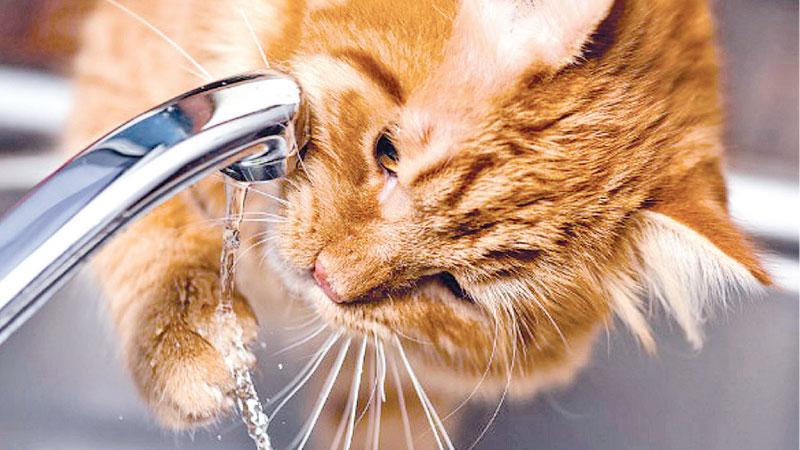
If you’re like me, you adore cats. Why do we find these creatures so irresistible?Perhaps like myself, you’ve owned a cat — or more likely, been owned by one. You know the joy that cats can bring, even when they’re being obnoxious. What follows can also be applied to dogs. But today, I’m focusing here on cats.
If you’re concerned about the amount of water your furry friend is drinking each day, you certainly have a good reason to be! Cats in general don’t really have a high drive to drink water, so dehydration can be a serious concern for them.
So what can happen to your cat if he gets dehydrated? Dehydration can lead to many problems, but the most common two are kidney problems and urinary tract infections. Other common issues your cat could encounter are inflammation of the bladder, a ruptured bladder and even bladder stones which can block the urinary tract and even have the possibility of leading to death in extreme cases. It’s important to keep an eye on your cat’s water consumption as it does have a significant impact on his health. Keep an eye on the litter box, too.
If it seems like your cat is not urinating as much as he normally does, if he’s spending time in the box straining or if you see blood in the litter box, call your veterinarian right away.
The biggest concern is that a dehydrated cat doesn’t show a lot of obvious outward signs unless you are looking and checking. Some of the very obvious signs are things like panting, lack of appetite and a cat being less active than normal. However, the easiest way to detect feline dehydration is by testing the elasticity of their skin. Pinch the skin between your cat’s shoulders (not so hard that it hurts), and release it. If your pet is sufficiently hydrated, the skin will spring back into place.
But before we get into how much water your cat should drink each day, let’s take a look at why water is so important to your cat and why they don’t tend to drink very much of it on their own.
Water is as vital to a cat’s survival as it is to humans’. Despite being good for them, many cats don’t like drinking water, especially if it’s still or standing water. Hydration is the physiological state of balanced electrolytes, specific minerals and fluids within the body, and maintaining this balance is important. Water affects everything from circulation to digestion, so it’s evident why keeping your cat hydrated is critical. Water not only provides fluids, but also electrolytes, such as sodium, potassium, and chloride, all of which are necessary for proper body function. A cat’s needs for water depend on many factors.
Heat, obviously, will increase the water needs as will exercise. Diet also affects how much water is needed; a food with a high moisture content will decrease how much water the cat will need to drink while a dry food will increase it.
There are three primary reasons why a cat may not want to drink. These include:
1. Their water smells contaminated.
2. They find plain water boring.
3. They don’t like their water bowl.
 If your cat refuses water, you need to find a way to keep your feline hydrated. All cats are different and have their own preferences, though.
If your cat refuses water, you need to find a way to keep your feline hydrated. All cats are different and have their own preferences, though.
As a result, you may need to try a few different methods of providing water to find something your kitty likes. Just because your cat ignores their water bowl doesn’t mean that it will always remain that way. There are quick and easy modifications that anyone can make to get a cat to drink water again.
Your cat’s water bowl can be a major part of why they won’t drink. Follow this checklist, and see if it brings any results. Keeping your cat hydrated will help keep her happy and healthy. You are your cat’s lifeline to good health, and he is depending on you to help keep him healthy and well-hydrated. You’ll both be much happier if you respect that trust.
· Move your cat’s water bowl away from their food.
· Move your cat’s water bowl away from their litter tray.
· Provide multiple water bowls throughout the home, each in different rooms.
· Use solid, immovable water bowls.
· Ensure that your cat is not experiencing any discomfort from their water bowl.
I’ll freely admit it is hard to know the exact amount of water a cat should drink each day. There are numerous different sources citing different amounts of water.
Know your cat’s drinking habits. If they suddenly go “off water” or start drinking excessive amounts regularly, visit your veterinarian immediately.
By the time your cat starts to develop visible signs of dehydration, they can already be extremely sick and it might take quite some time for your cat to recover. In most cases of dehydration, your cat will require an IV to provide additional fluids.
